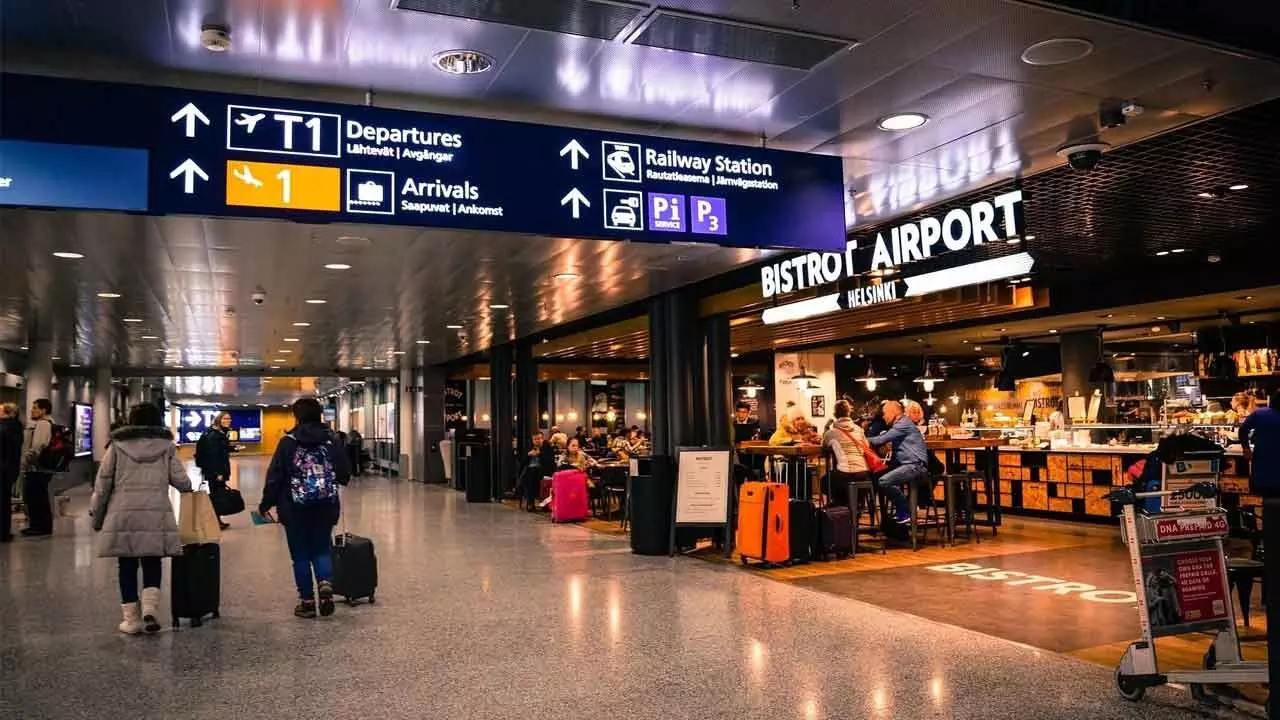Adani Group Expanding Into Airport Retailing Is A Well-Timed Strategic Move
Airports provide lucrative space for retailers into duty-free and duty-paid goods, luxury brands and travel essentials
Adani Group Expanding Into Airport Retailing Is A Well-Timed Strategic Move

The duty-free shops at airport arrivals in India do more business than their peers at departure, and the highest-selling category in arrivals has been liquor
Adani Group, through its airport operations, is expanding into the duty-free retail sector, aiming to increase non-aero revenue, with a focus on both domestic and international expansion, including acquiring a stake in a French duty-free company and setting up duty-free shops at Macau International Airport.
Between 2025 and 2035, the airport retailing market is predicted to grow as global air passenger traffic rises, and more tourism and disposable income among the traveling population leads to increased travel and spending at duty free and retail outlets.
Airports have evolved into significant commercial hubs as they present a lucrative space for retailers looking to sell duty-free and duty-paid goods, luxury brands and travel essentials.
These trends, along with improved passenger experiences, digital transformation in airport retail, and increased penetration of Omni channel retailing strategies further drive the growth of market.
Moreover, AI-empowered customer analytics, dynamic inventory management, and hyper-personalisation of recommendations are assisting retailers to increase sales and drive engagement. As the shopping experience becomes more focussed on seamless experiences, airports are using innovative technology to blend offline and online retail spaces to create shopping experiences that are interactive and convenient for travellers.
The airport retailing market was estimated at around $37.23 billion in 2025 and is expected to hit $107.6 billion by 2035, registering a CAGR of 11.2 per cent. Increasing demand for premium and exclusive products, together with improved digital payment mechanisms and personalised shopping experiences, is boosting market growth. Moreover, the advent of AI and AR in retail operations is transforming the airport shopping scene, streamlining transactions, and elevating product interactions.
The India Travel Retail Market size is estimated at $2.03 billion in 2024, and is expected to reach $5.40 billion by 2029, growing at a CAGR of 21.59 per cent during the forecast period (2024-2029). This market has been growing steadily over the years. As people's income rise, India's position as a business powerhouse and tourist destination will also continue to solidify, leading to the growth and prosperity of this industry.
A combination of a large and growing population, increasing air connectivity, inbound tourism, and the growing disposable incomes and propensity to travel internationally by India's middle class are some of the major factors fuelling the growth of India's travel retail market.
Nearly 80 per cent of the country's duty-free shoppers are Indians which is quite unlike other markets in the Asia Pacific, such as Korea or Thailand, where most duty-free sales are from international travellers. However, this is likely to change with the growth in international tourism in the country. While India accounts for only 10.7 per cent of the Asia Pacific region's total international tourist arrivals, its year-on-year growth rate has been well above the region's average in recent years.
Nearly 50 per cent of an international airport's revenue is generated from duty-free and travel retail activities. In terms of sheer size and range that is offered, the duty-free retail areas at Indira Gandhi International Airport in Delhi and Chhatrapati Shivaji International Airport in Mumbai are nothing less than high-end malls.
The largest duty-free area in India is currently operated by Mumbai Duty-Free at Mumbai International Airport Limited (MIAL), followed by New Delhi International Airport Limited (DIAL), which is operated by New Delhi Duty-Free Services (DDFS).
Apart from the product variety offered at the duty-free stores, the promotional and other offers attract Indian consumers. The duty-free shops at airport arrivals in India do more business than their peers at departure, and the highest-selling category in arrivals has been liquor. This is primarily because the prices offered on liquor at duty-free shops are extremely competitive. In fact, arrivals account for the lion's share of the business at duty-free shops as inbound travellers like to pick up items on their way back to the city.
The Indian travel retail market is relatively competitive, with several international and domestic brands present in the market, including Dufry, Lotte, The Shilla, Delhi Duty-Free, and Flemigo Travel Retail. The increasing focus on offering a diverse and wide range of products may enable the vendors to attract a large number of consumers and gain large market shares. The adoption of innovative promotional campaigns and attractive price offerings may help the players sustain the competition in the India travel retail market. Even then, room for growth still exists. Some forecasters expect India’s domestic traffic to double by 2030 (when it reaches 300 million domestic passengers).
International travel is projected to more than double by then (reaching 160 million passengers), which will nevertheless amount to less than a third of the country’s 1.4 billion people.

